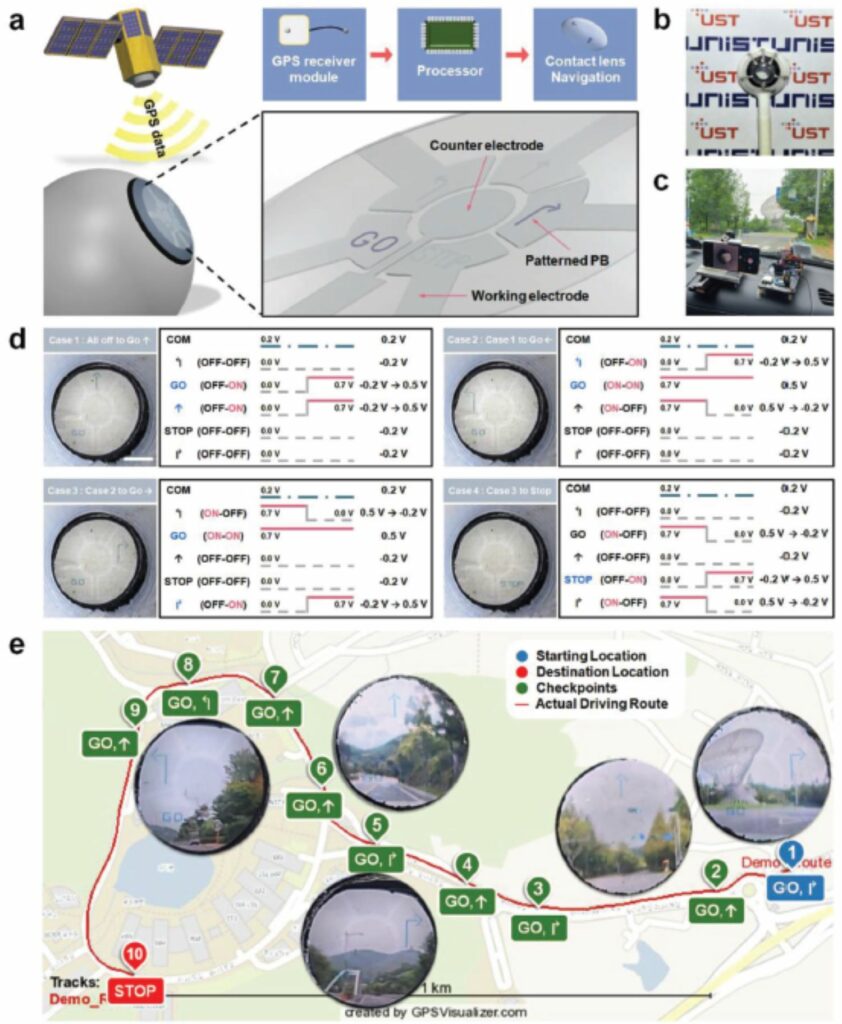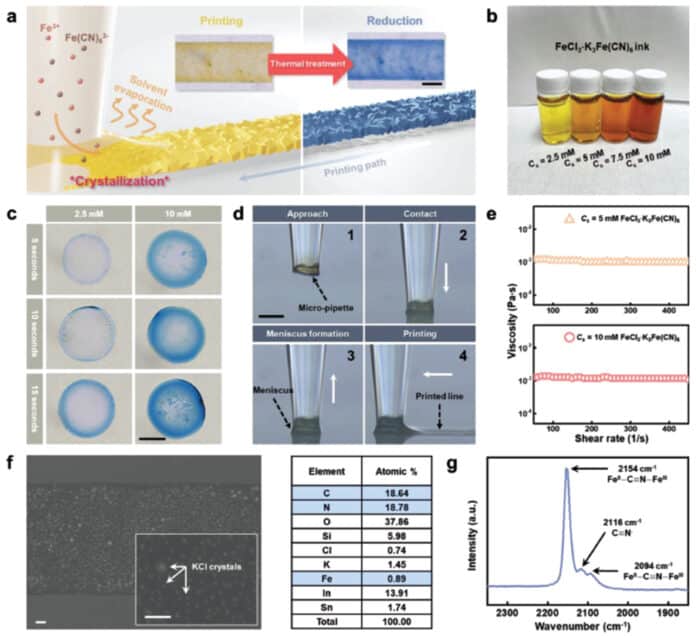The core technology for smart contact lenses that can execute AR-based navigation using a 3D printing process has been introduced by a joint research team connected to UNIST. The research team claims that the new smart contact lenses may be worn within a person’s eye like regular contact lenses.
The expensive cost, experimental technology, and cumbersome design of current AR gadgets are some drawbacks, making it challenging for them to enter the market. As they may be worn inside a person’s eye, smart contact lenses, on the other hand, are both economic and practical. Global leaders like Google are now developing smart contact lenses that can use augmented reality. Due to significant technical difficulties, obstacles still prevent the effective and efficient commercialization of research.
Energy-efficient electrochromic (EC) displays that can be powered with little power are excellent for using augmented reality with smart contact lenses. Because of its uniform coloring, quick kinetics, great optical contrast, numerous color states (blue, white, and green), environmental friendliness, and affordability, prussian blue (PB) has been recognized as among the most alluring EC materials.
However, the research team pointed out that due to the difficulties of micro-patterning PB on the contact lens, this technology needs to be improved in its ability to display words or images required for a display on AR smart contact lenses.
The joint research team investigated ways to produce micro-patterns of PB without using an electroplating process, and as a result, they developed a straightforward and efficient printing strategy. They used meniscus-guided printing with an acidic-ferric-ferricyanide ink made of FeCl3, K3Fe(CN)6, and HCl. The meniscus of the acidic-ferric-ferricyanide ink is crucial in this situation.
As with conventional electroplating, the substrate must be a conductor when voltage is applied. However, with the meniscus phenomenon, no restriction on the substrate can be used because crystallization occurs by the natural evaporation of the solvent.
Scientists noted, “Our micro-pattern technology is very fine (7.2 micrometers) that can be applied to smart contact lens displays for AR, and the color is continuous and uniform.”
“The role of smart contact lenses is most anticipated in fields like navigation. Through experiments, researchers successfully demonstrated PB-based EC displays in a smart contact lens with a navigation function. The device could display directions to the destination to the user on the EC display by receiving GPS coordinates in real-time.”

“Although thin glass ITO was used for the EC display in this study, it can be further developed to patter transparent electrodes, such as graphene, on flexible and printing EC materials. We believe that our novel strategy will serve as an attractive method for realizing PB-based EC displays and diverse functional devices with micro PB patterns.”
Journal Reference:
- Je Hyeong Kim, Seobin Park, Jinhyuck Ahn, et al., “Meniscus-Guided Micro-Printing of Prussian Blue for Smart Electrochromic Display,” Advanced Science (2023). DOI: 10.1002/advs.202370017
